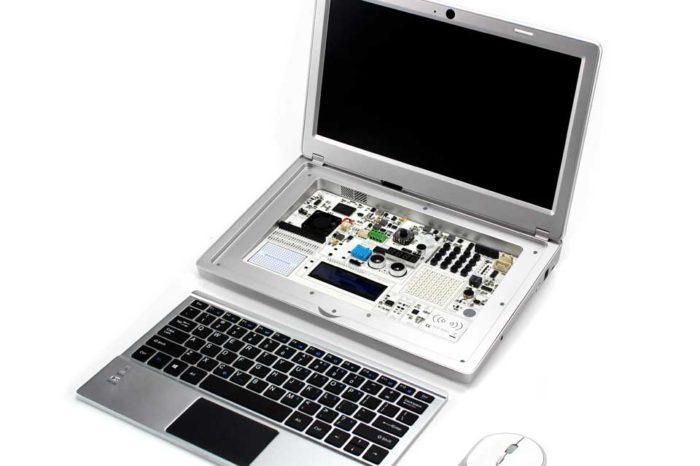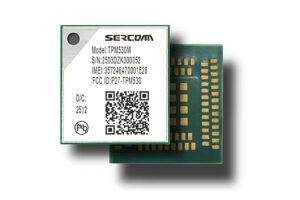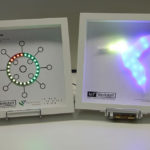Covid-19: DIY CO2 signaling device reduces infection risks in the classroom
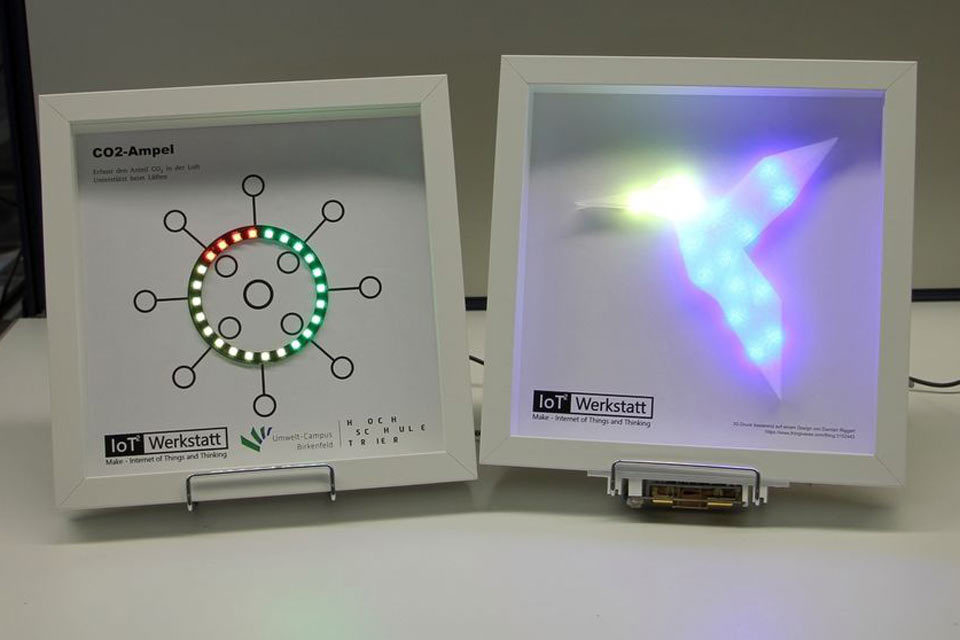
Protect yourself better against an infection with Covid-19 and learn something at the same time: Researchers at the Umwelt-Campus of the University of Applied Sciences Trier and experts of the German national Digital Summit have developed an open source kit that displays an alert, when its time to air the classrooms.
In Germany, schools have just re-opened after the summer break. And despite the current increase in the number of Covid-19 infections, teaching at primary and secondary schools continues as if nothing had happened. Okay, almost: Mouth protection and regular hand washing are mandatory almost everywhere. But then there was something else: rooms have to be ventilated regularly! Because the danger of infection also lurks in the air in form of aerosols filled with the virus. Even distance rules are not much help, if you can’t keep to them in full classrooms.
Knowing when its time to open the windows
But when is it time to make a move? If it’s too hot or too cold outside, many teachers like to keep the classroom windows closed a little longer than it is probably good. So how do I know when it is absolutely necessary to ventilate?
The idea of knowing the right time to ventilate the rooms is very simple: the more the air in a room is “used”, the higher the concentration of carbon dioxide, CO2.
“If we measure a concentration of 1,200 ppm and there are several people in the room, practically every 50th breath we take there comes from the lungs of a another person. The higher the concentration, the greater the potential risk of infection,” says Prof. Klaus-Uwe Gollmer from the University of Applied Sciences in Trier.
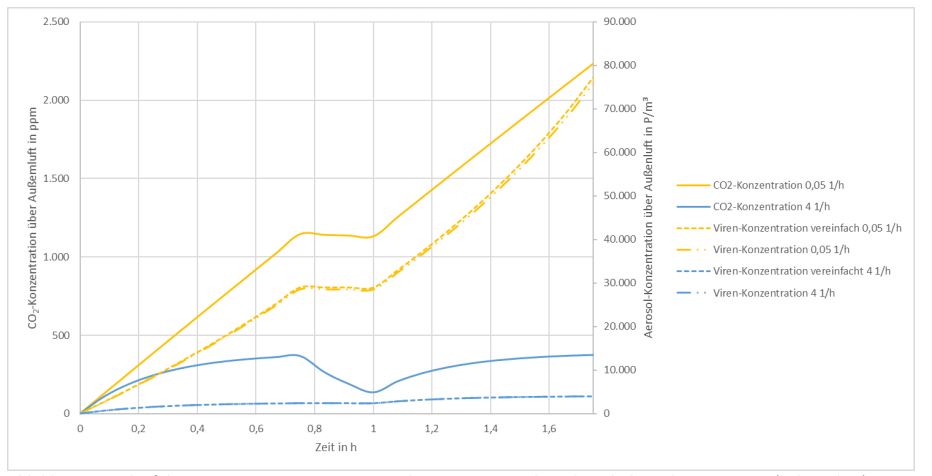
Course of CO2 concentration in a classroom during 2 school hours with a break (left axis) and concentration of aerosols (right axis). Source: TU Berlin
Together with the IoT expert group at the German national Digital Summit, the Trier University of Applied Sciences has developed an open source tool, with which such a sensor can be easily built in-house.
CO2 signaling as a DIY kit for promoting MINT capabilities
The students can actively participate in the self-building process and explore the background. The initiative would like to encourage a participatory action and support the reconstruction. Building instructions and ideas can be found on the homepage of the research project.
We need a young generation of digital tinkerers
In contrast to a ready-made CO2 signaling device, the do-it-yourself construction for the own classroom promotes the important acceptance of its use and thus also conveys algorithmic thinking, MINT basics and the feeling of contributing something to risk avoidance and the protection of society.
“Makerspaces, i.e. rooms with a microcontroller, soldering station and 3D printer, should be part of the basic equipment of a modern school and university, because we need a young generation of digital tinkerers,” says Prof. Gollmer.
The Do-It-YourSelf CO2-signaling device is based on an ESP8266 system, for example with the hardware of the IoT-Octopus or of the Adafruit Feather HUZZAH ESP8266. The necessary circuit diagram of the Octopus is available here. A template for a matching plywood housing is available here, the matching picture frames come from a famous Swedish furniture store.



